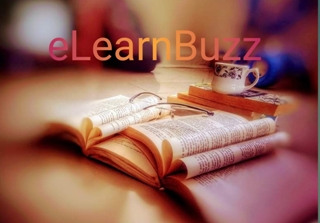In this post History MCQ Exercise 30 Important History Questions for SSC, UPSC, UPPSC, State PSC & Other Examinations are given. Most of these questions have previously been asked in SSC CGL and other examinations. Attempt these question.
Answer of these History MCQ General Awareness Questions are available in the last of this post. Check how many of your answers are correct and share your score using comment section.
Read – Indian Polity Questions for UPSC and State PSC
History MCQ Exercise for SSC, UPSC, UPPSC, State PSC & Other Examinations
1- Which of the following writers has called Akbar’s Din-1-Ilahi as a monument of his folly, not of wisdom?
a) Badayuni
b) Vincent Smith
c) Barni
d) W.Haig
2- Who among the following was the court physician of Kanishka ?
a) Vasumitra
b) Nagarjuna
c) Charaka
d) Patanjali
3- Who was the founder of the Satvahana Empire ?
a) Kanha
b) Simuka
c) Hala
d) Gautamiputra
4- The first Buddhist Council was held at
a) Kashmir
b) Rajgriha
c) Pataliputra
d) Vaishali
5- The Veda which deals with the rituals is known as
a) Rigveda
b) Yajurveda
c) Samaveda
d) Atharvaveda
6- Which script was used in Ashoka’s inscriptions ?
a) Brahmi
b) Devanagri
c) Gurmukhi
d) Sanskrit
7- The Upanishads are the
a) Great Epics
b) Story Books
c) Source of Hindu Philosophy
d) Law Books
8- The people of the Indus Valley civilisation worshipped
a) Vishnu
b) Indra
c) Pashupati
d) Brahma
9- The word ‘Satyameva Jayte‘ have been derived from which
Upanishad?
a) Akshi Upanishad
b) Mundaka Upanishad
c) Garuda Upanishad
d) Mahavakya Upanishad
10- Jama Masjid of Delhi was built by
a) Akbar
b) Humayun
c) Babur
d) Shah Jahan
Read – उत्तर प्रदेश के प्रमुख वार्षिक उत्सव और मेले
11- The Red Fort in Delhi was the residence of emperors of which
dynasty in the 16th century?
a) Rajput
b) Khalji
c) Tughluq
d) Mughal
12- Where is Humayun’s Tomb is located?
a) Hyderabad
b) New Delhi
c) Mumbai
d) Kolkata
13- Which Governor General abolished the ‘Sati System’ in India?
a) Lord Canning
b) Lord Ripon
c) Lord William Bentinck
d) Lord Dalhousie
14- The Poona Pact was signed between Mahatma Gandhi and
a) Muhammed Ali Jinnah
b) Lord Irwin
c) Subash Chandra Bose
d) B.R. Ambedkar
15- Big landlords or warrior chiefs in the 7th century were
acknowledged as ………. by the existing kings.
a) Rashtrakutas
b) Samantas
c) Chalukya
d) Brahmanas
16- Which Sikh Guru initiated ‘The Khalsa’?
a) Guru Nanak Dev
b) Guru Gobind Singh
c) Guru Angad Dev
d) Guru Tegh Bahadur
17- Epigraphy is the study of which of the following ?
a) Coins
b) Inscriptions
c) Temples
d) Birds
18- Who wrote Akbarnama?
a) Abul Fazal
b) Faizi
c) Abdur Rahim
d) Abdul Qadir
19- Who built the Konark’s Sun temple ?
a) Anantavarman Chodaganga Deva
b) Kapilendra Deva Routaray
c) Narshimadeva
d) Purushottam Dev
20- Who amongst the following was the successor of Sikh Guru Harai
a) Guru Angad Dev
b) Guru Tegh Bahadur
c) Guru Hargobind
d) Guru Amar Das
Read – महत्वपूर्ण अंतरराष्ट्रीय रेखाएँ International Boundary Lines
21- The Agra fort was built by
a) Shah Jahan
b) Akbar
c) Jahangir
d) Babur
22- Dara Shikoh was killed in conflict with his brother …..
a) Jahangir
b) Aurangzeb
c) Babur
d) Shah Jahan
23- In which city of India is Charminar located ?
a) Pune
b) Delhi
c) Aurangabad
d) Hyderabad
24- The ……….. were the successors of Timur, the ruler of Iran, Iraq and modern-day Turkey.
a) Rajputs
b) Khaljis
c) Mughals
d) Tughluq
25- What is the name of court poet of king Harshavardhana ?
a) Tulsidas
b) Banabhatta
c) Surdas
d) Raskhan
26- Lord Cornwallis is known for
a) permanent revenue settlement of bengal
b) attacking the caste system
c) land revenue settlement of United States
d) ryotwari settlement of Madras
27- Who was given the title of “The Ambassador of Hindu-Muslim
Unity” for being the architect and mastermind of the historic
Lucknow Pact ?
a) Sir Sayed Ahmad Khan
b) Fazl-ul-Haq
c) Syed Mohammad Sharfuddin Quadri
d) Muhammed Ali Jinnah
28- Who was the first Governor General of India ?
a) Lord William Bentinck
b) Lord Dalhousie
c) Lord Cornwallis
d) None of the above
29- Who was the first Englishman to appear in the Mughal Court during Jahangir’s reign?
a) Paul Canning
b) Captain William Hawkins
c) Wiliam Edward
d) Ralph Fitch
30- The foreign traveller who visited India during the reign of Shah Jahan was
a) Thomas Roe
b) William Hawkins
c) Ibn Batuta
d) Manucci
Answers of Above History MCQ Exercise for SSC, UPSC, UPPSC, State PSC & Other Examinations
1(b), 2(c), 3(b), 4(b), 5(b), 6(a), 7(c), 8(c), 9(b), 10(d), 11(d), 12(b), 13(c), 14(d), 15(b), 16(b), 17(b), 18(a), 19(c), 20(b), 21(b), 22(b), 23(d), 24(c), 25(b), 26(a), 27(d), 28(a), 29(b), 30(d)
You may use ‘comment section’ below for your valuable comments/feedback.
